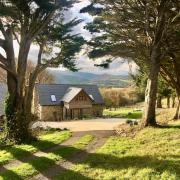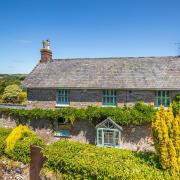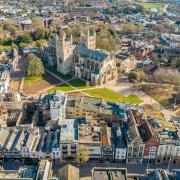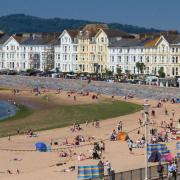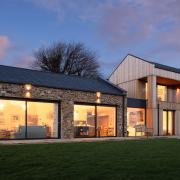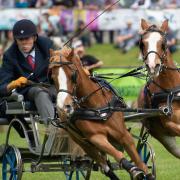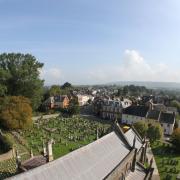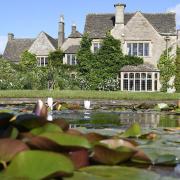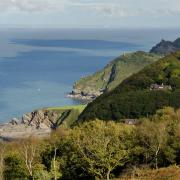A new visitor centre at The Donkey Sanctuary sheds new light on the charity’s global mission, writes Owen Jones.

It is already one of Devon’s best-known attractions, drawing in an estimated 320,000 visitors a year. Now The Donkey Sanctuary has unveiled a new visitor centre, to help explain how it works in Britain and across the world to help improve the lives of these often mistreated beasts of burden.
That work – coordinated from a beautiful farm on the coast near Sidmouth – includes campaigning, education, rehoming and even using donkeys as therapy.
“We’re not just a farm on the top of a hill where donkeys are looked after!” says Dawn Vincent, the charity’s head of communications. It’s that message the charity wants to get across to the holidaymakers and locals who will visit the sanctuary this year.

I meet Dawn in The Kitchen, a new 200-seat restaurant on the site serving breakfasts, lunches, coffee and cakes. The fabulous views alone make it worth a visit – looking down across green fields (and donkeys) to the sea.
She explains the wide-ranging work of the charity, which was founded by her grandmother, Dr Elisabeth Svendsen, 49 years ago.
When we meet, in February, Dawn is just about to leave for Spain, continuing the charity’s 31-year campaign against the use of a donkey in the annual Peropalo festival at Villanueva de le Vera. The small donkey, dragged through noisy and crowded streets, must be terrified, she says.

Another ongoing campaign aims to halt the rapidly growing trade in donkey skins, which are used in a traditional Chinese remedy called ejiao.
Education work involves charity workers travelling to remote communities in far flung places to teach people how to look after working donkeys better.
The Donkey Sanctuary received some £38 million in donations last year for its work here and abroad. It employs 650 people worldwide, including 10 vets at a purpose-built donkey hospital near Sidmouth. Its work reaches 1.6 million donkeys globally.

It has 10 sanctuaries around the UK and Europe providing lifelong care to more than 6,000 donkeys and mules.
Explaining some of this work, in a fun way, is at the heart of the new £140,000 visitor centre.
The story of donkeys through the ages is told using clever interpretation panels.

There’s plenty to entertain both young and older visitors, with interactive displays, a static Land Rover to climb over and one of the largest spinning globes in the UK which shows how donkeys are used across the world.
A lovely touch is a little wooden hut – situated in a butterfly garden where charity founder Dr Svendsen had her original summer house. Answer the old-fashioned telephone on the desk she once used and you’ll hear a recording of her voice, explaining why she started The Donkey Sanctuary.
For Dawn, who lost her granny in 2011, it’s an emotional reminder of the determined woman who went into action after seeing poorly-treated donkeys at Exeter market.

There’s no charge to visit The Donkey Sanctuary, making it a great day out for families.
Of course the animals are the biggest reason to visit – donkeys and mules rescued from mistreatment or relinquished into the charity’s care, now happy to spend their time with visitors.
But there are also great walks around the farm and down to the coast path and to nearby Weston Mouth beach – where in the past donkeys used to be employed to haul seaweed for fertilising local cliff top potato fields.
And there’s a large gift shop with a huge range of donkey-themed gifts including some colourful fun kitchenware.
Learn more at thedonkeysanctuary.org.uk
THE DONKEY SANCTUARY
- Dr Elisabeth Svendsen created The Donkey Sanctuary in 1969
- Her first donkey was called Naughty Face
- The Donkey Sanctuary is free to visit and is open every day of the year
- The charity is supported by 1,000 volunteers who give their time to help donkeys
- There’s a waiting list of people willing to rehome donkeys for the charity
- You can adopt one of nine donkeys at the sanctuary and receive regular updates on their lives
- Donkeys live a long time. The sanctuary’s oldest was 59 and the average age of donkeys at Slade House Farm is 27
Take our donkey-themed quiz to see how much you know about this magnificent beast!
__________________






